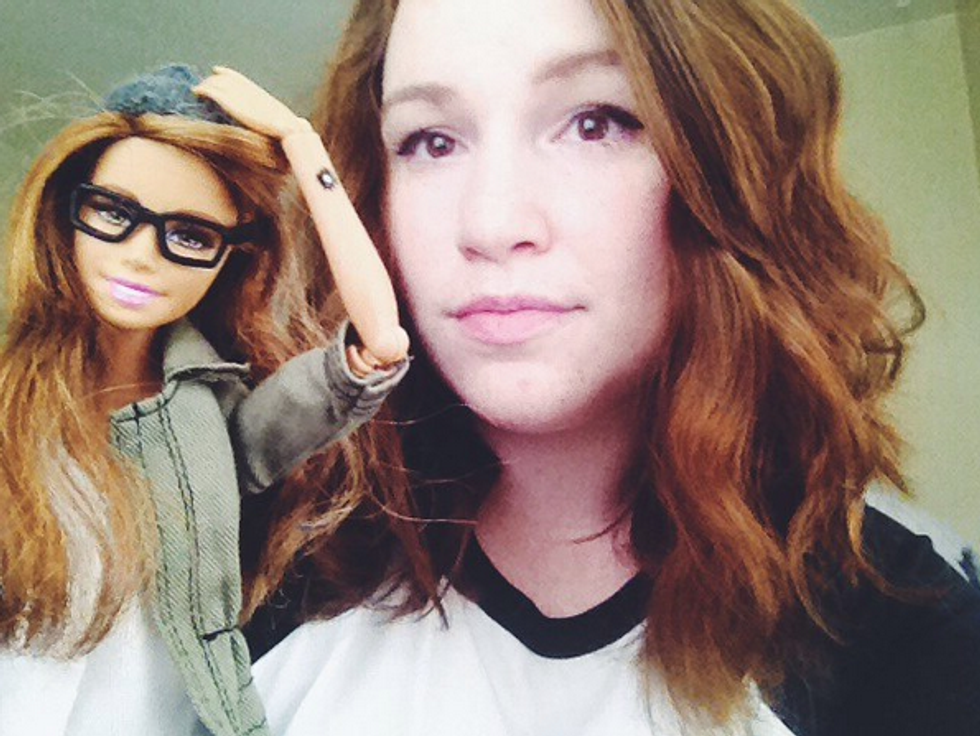Hi, my name is Trinh and I am an Instagram addict. You can bet that the little cartoon-like camera icon is the most tapped app on my phone, and why shouldn’t it be? Through one social media application I am exposed to whatever glamorous mother-daughter thing Beyonce is doing with Blue Ivy, the newest (and priciest) drink addition to Starbucks, and a plethora of intricate yoga accounts in case I decide to drop everything I’m doing right now and pursue the smoothie-drinking, yoga-matting life of a die-hard yogi. (Wishful thinking--I know, I know.)
However, in the past few days, I’ve been more watchful of my social media intake. Essena O’Neill, the 18-year-old Australian internet sensation, ironically, has quit social media... or at least the materialistic side of it. She states, “It’s easier to want and sit and view online, it’s a lot harder to sit alone with yourself and be real with your life.” Most of the world has heard of O'Neill and her “bold” and “courageous” act to expose the negative aspects of social media... through social media, and has either chosen to relentlessly praise her or criticize her on her actions.
But first, let’s backtrack. If you haven’t heard of her yet, "Socality Barbie,"created by Darby Cisneros, shares the same views as O’Neill but in a different perspective. Cisneros states that she started Socality Barbie as a way to make fun of the Instagram trends that she thought were ridiculous. Socality Barbie has been a gateway account to realize how individuals in our society choose to present themselves online and through internet platforms. Cisneros points out that one of the most common flaws in social media is the inauthenticity and the lack of pure motives.
Socality Barbie often wears her military-print jacket, skinny jeans, a pair of booties, and looks like she’s living the "perfect" Pacific Northwest life. Her (fake) adventures consist of lounging on the beach, late-night star-gazing, candidly posing next to train tracks, and hanging out with Kent, her scruffy, flannel wearing barista/model/writer/woodworker of a boyfriend. Her Instagram pictures are usually paired with an inspiring yet overused caption like, “I believe in the person I want to become,” accompanied by a multitude of hashtags.
Cisneros says, “People were all taking the same pictures in the same places and using the same captions. I couldn’t tell any of their pictures apart, so I thought, 'What better way to make my point than with a mass-produced doll?'”. If you were to scroll through Socality Barbie’s Instagram account, there might be a blurry and even non-existent line between her life as a plastic doll and the well planned out and directed lives of people who want to present a more glamorous yet "relatable" side of them to an internet audience.
Now, what if we compared O’Neill’s sudden drive to quit social media and Cisneros’ tactic of bringing awareness to the inauthentic nature of it? While both have used social media to criticize the artificial and detrimental elements of what these media platforms portray, both have different approaches. O’Neill rants in her latest YouTube video about how even though she felt like she was at the pinnacle of success she felt miserable; she felt like she had the dream life because of the quantity of followers she had gained on Instagram and how 'famous" she was becoming. As O’Neill dove further into the social media world and gained enormous publicity through her vegan passions and perfect edited yet "candid" pictures, she bit into the forbidden fruit that engulfed her into a world of artificiality. As she pursues to exploit the social media industry, her hypocritical methods prevent us from seeing her true motives by keeping the "fake" photos on her Instagram and taking them down as soon as her followers commented on how hypocritical it was to keep them up.
On the other hand, Cisneros implements the overused Instagram aesthetic of "not so candid" candid Instagram pictures to point out how deceptive these photos are. They serve as a performance of how one can twist a common factor and portray it as some unique and special situation where in reality, it ends up looking like every other picture. Sadly, due to cultural influence, what we think is original usually isn’t.
Personally, I agree more with Cisneros’ approach of pointing out the flaws in our society when it comes to being involved with social media: “It’s like we’re all competing to make the best computer screensaver and the winner gets crowned most authentic.” However, O'Neill does bring out good points. Though O’Neill presents basic knowledge about how dangerous social media can become, she reassures us that we’re not alone in the mistake of falling in love with how perfect our lives can look through lighting fixes and subtle (or not so subtle) filters: “When you let yourself be defined by numbers, you let yourself be defined by something that is not pure, that is not real, and that is not love.”
But before we can take a side, we must ask ourselves a question first: How can we blame social media for our insecurities when we shamelessly partake in it and are the reason that it exists?











 The minimum wage is not a living wage.
StableDiffusion
The minimum wage is not a living wage.
StableDiffusion
 influential nations
StableDiffusion
influential nations
StableDiffusion












